
views
X
Research source
Originally used for divination, dice were soon used for various games, including games of chance. While the best known game of chance with dice may be craps, in both its casino and street forms, other gambling games that use a pair of dice include Hazard, ‘’Cho-Han Bakuchi,’’ Under-Over 7, Mexico, and Shut the Box.
Playing Bank (Casino) Craps
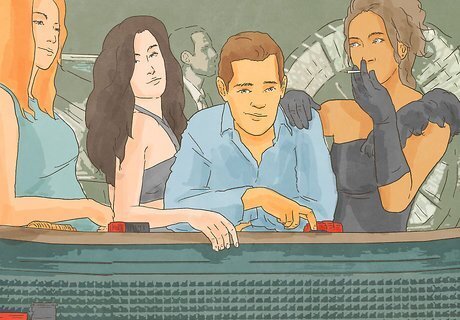
Designate a shooter. This is the person who will roll or throw the dice for himself/herself and the other players to make bets on the outcome of the roll. All players, including the shooter, are playing against the house when they make bets.
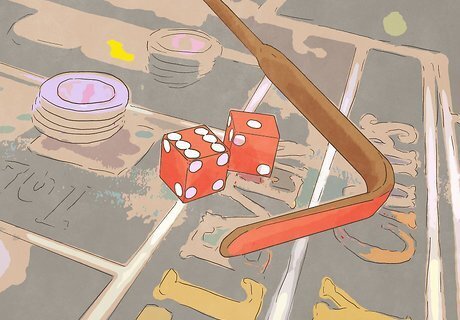
Hand the shooter the dice. The stickman (the person who retrieves the dice using a long, curved stick) offers the shooter a selection of (usually) five dice from which two are chosen. In street craps, usually only the two dice necessary are provided. Dice used for casino craps typically feature sharp edges and carefully marked so that each face weighs the same as each of the other faces.
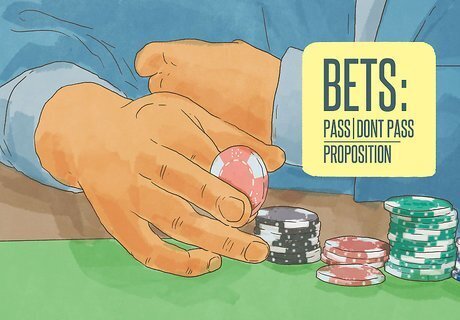
Place the initial bets. The shooter is required to bet on the outcome of the first roll before rolling the dice, while other players are allowed to bet as they see fit from the available betting options, provided they make their initial bets when a betting round starts. Initial bets include the following: Pass: An even money bet that a “right” or winning number will be rolled before a “wrong” or losing number. A pass bet is placed on the Pass Line when playing at a marked craps table. This is one of the options for the shooter’s required bet. Don’t Pass: An even money bet that a “wrong” or losing number will be rolled before a “right” number. (This is sometimes called “playing the dark side” and considered by some to be in bad taste.) A don’t pass bet is placed on the Don’t Pass line when playing at a marked craps table. This is the other option for the shooter’s required bet. Some casinos also require the other players to make a pass or don’t pass bet before the first roll. Odds (or Free Odds): This is a bet that can supplement a pass, don’t pass, or come bet. It is paid at the actual odds of rolling a given roll instead of whatever odds the house normally offers for one of the other bets. This bet is usually placed adjacent to or overlapping the bet it is supplementing instead of directly on top of it. Laying odds on a pass bet usually involves making a smaller bet to win big, while laying odds on a don’t pass bet usually involves making a larger bet to win small, although the casino can set a maximum of what multiple of a pass or don’t pass bet can be made as an odds bet. Proposition/service bets: These are bets on a specific roll outcome, such as a specific total or range of totals, or a specific combination of face values on the two dice. These are generally long-odds bets, as they are less likely to come up than the pass or don’t pass values.
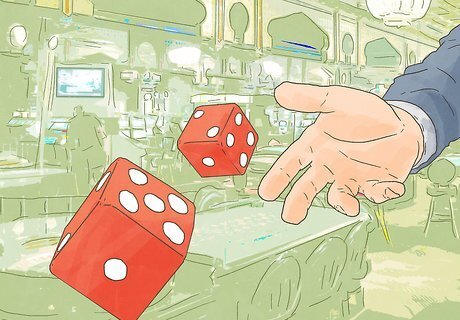
Roll the dice. The first roll is known as a “come-out” roll. The outcome of this roll determines which bets are paid, lost, or held over for subsequent rolls. If the come-out roll is a 7 or 11, pass bets win and don’t pass bets lose. The next roll becomes a come-out roll for a new round of play. If the come-out roll is a 2, 3, or 12, pass bets lose. Don’t pass bets win if the roll is a 2 or 3, while they are returned to the player (“pushed”) without winning money if the roll is a 12. (In some casinos, a roll of 2 is the “push” number, while other casinos allow the player to choose which of the two numbers is the “push” number.) If the first roll is anything other than one of these results, the number rolled becomes a “point” that will win if rolled, and the round continues. Pass and don’t pass bets are carried over. In casino craps, the shooter is required to roll both dice with one hand and have them hit the far wall of the table for the roll to count. If one of the dice flies out of the table, the shooter may either select one of the unchosen dice originally offered by the stickman or ask for the die back. (In such case, the boxman, the person who manages the table and its bets, will inspect the die to make sure it has not been milled or loaded.) In street craps, players may elect to use a backstop such as a curb, wall, or chair-edge, stretch a blanket to contain the dice, or do without a restraint.
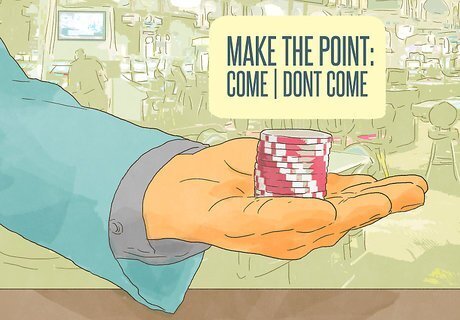
Place bets for the attempt to make the point. Pass, don’t pass, odds, and service bets can be made prior to each roll where the shooter attempts to make the point the same as prior to the come-out roll. In addition, two other bets are possible: Come: Betting that the shooter will make a 7 or 11 on the first point roll or will make the point before making a 7. Don’t come: Betting that the shooter won’t make a 7 or 11 on the first point roll or will roll a number other than the point and then roll a 7 before the point can be made. As with the pass and don’t pass bets, players can supplement come and don’t come bets with odds bets. These bets cannot be laid down until a come-out point has been established.

Roll to attempt to make the point. The shooter continues to roll until the point is made or a 7 is rolled. If the shooter makes the point on the first roll, pass and come bets win, while don’t pass and don’t come bets lose. The shooter does not have to make the point with same combination that was used to establish it: if a point of 4 was established by rolling a 1 and 3, the point can be made by rolling either 1 and 3 or 2 and 2. If the shooter makes the point on any roll after the first, pass bets win and don’t pass bets lose. If the shooter rolls an 11 on the first point roll, come bets win and don’t come bets lose. Pass and don’t pass bets are carried over to the next roll. (Rolling an 11 after the first point roll has no effect on the outcome of pass, don’t pass, come, or don’t come bets.) If the shooter rolls a 7 on the first point roll, come bets and don’t pass bets win. Pass bets and don’t come bets lose. If the shooter rolls a 7 on any point roll after the first before rolling the point, don’t pass and don’t come bets win, while pass and come bets lose. The shooter’s turn as shooter ends, and a new shooter is chosen. If the shooter rolls a 2, 3, or 12 on the first point roll, come bets lose. Don’t come bets win if the roll is a 2 or 3, while they are pushed if the roll is a 12. (Rolling any of these numbers after the first point roll has no effect on the outcome of pass, don’t pass, come, or don’t come bets.) If the shooter rolls anything else on the first point roll, a come point is established as the new point for the come and don’t come bets, while the original come-out point remains as the point for pass and don’t pass bets. If the come point number is rolled before a 7 is rolled, the come bet wins and the don’t come bet loses. If a 7 is rolled before the come point is rolled, the don’t come bet wins and the come bet loses. If the original point is rolled before the come point is rolled, pass bets win, don’t pass bets lose, and the come and don’t come bets carry over while a new round of play starts to establish a new come-out point.
Playing Street Craps
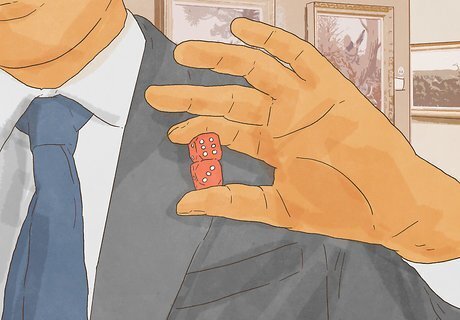
Designate a shooter. This person will roll a pair of matched dice. Before rolling, however, the shooter must lay down a bet. A backstop or restraining surface is not required for street craps, although players may choose to use a wall or curb as a backstop or restrain the dice by rolling them in a taut blanket.
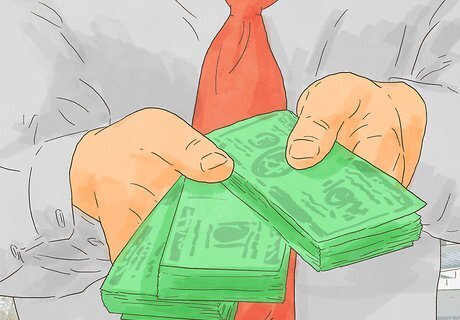
Have the other players put up a stake against the shooter. The other players may “fade” or bet any amount up to the amount of the shooter’s bet. If they do not fade the shooter’s entire bet, the shooter must withdraw the portion not faded. Players may also make side bets as to whether the shooter will roll a winning number or whether a certain combination will appear on the roll.
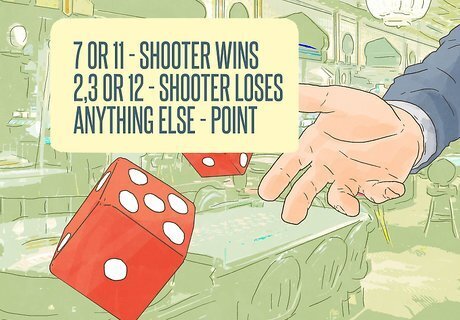
Roll the dice for the come-out roll. The outcomes are similar to bank craps. If the come-out roll is a 7 or 11, the shooter wins money from the other players. The shooter can bet again and make another come-out roll, or retire by passing the dice to the player to his or her left. If the come-out roll is 2, 3, or 12, the shooter loses the bet to the other players. The shooter again has the option to bet again or pass the dice to a new player. If the come-out roll is anything else, that number becomes the point. The other players may then make additional bets as to whether the shooter will or won’t make the point.
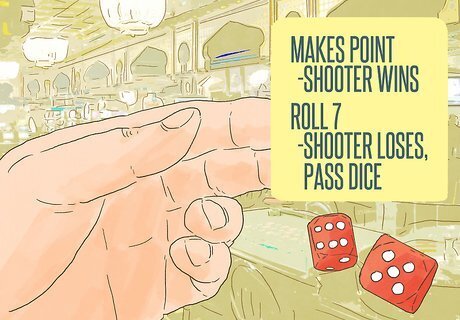
Roll the dice for the point-making roll. The outcomes are again similar to bank craps. If the shooter makes the point, the shooter wins and may either bet and play another round or pass the dice. If the shooter rolls a 7 (craps out), the shooter loses any money bet and must pass the dice to the next player. If the shooter rolls anything else, the shooter rolls again until either making the point or crapping out. There is no “come point” as in bank craps.
Playing Hazard
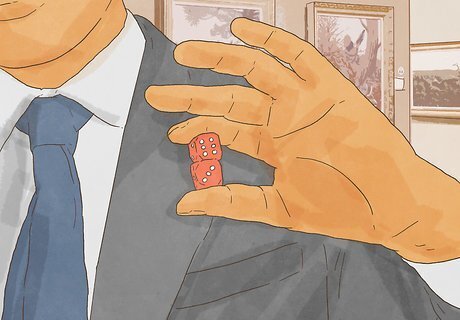
Designate a caster. In Hazard, the player who rolls the dice is called a caster instead of a shooter.
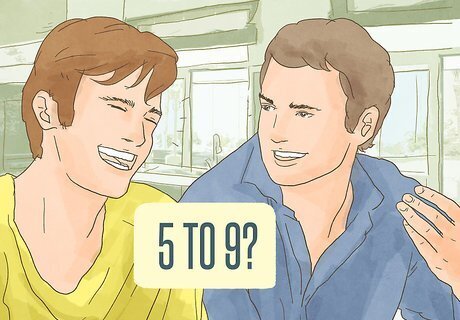
Have the caster specify a number from 5 through 9. This number is the main and determines which numbers win and which numbers lose when the dice are actually rolled. In some versions of Hazard, notably French rules, the main is determined by a preliminary roll of the dice. Because 7 is the number most likely to be rolled on two dice (1 chance in every 6 rolls), most casters chose this number as their main, thus leading to the game of craps.

Make bets on the outcome. The caster bets against the other players individually or as a group, or against a bank (the setter). Bets at this stage are whether or not the caster will roll the called main or a number that also wins if the main is called.

Roll the dice. The outcome of the first roll determines whether a bet wins, loses, or is carried over to the next roll. If the caster rolled the called main, the caster wins (nicks). If the caster rolled a 2 or 3, the caster loses (throws out). If the caster called a main of 5 or 9, but rolled an 11 or 12, the caster throws out. If the caster called a main of 6 or 8, but rolled a 12, the caster nicks. If the caster called a main of 6 or 8, but rolled an 11, the caster throws out. If the caster called a main of 7, but rolled an 11, the caster nicks. If the caster called a main of 7, but rolled a 12, the caster throws out. If the caster throws out at this stage, the caster has an opportunity to call a new main, bet, and roll again, unless this is the caster’s third consecutive loss, at which point the player to the caster’s left takes over as caster. If the caster rolled a number other than the main called, but not one of the losing numbers, that number becomes the chance (point) number the caster must roll to win.

Make bets on the outcome of the chance roll, if one is to be made. The caster and the other players can raise their original bets on whether the chance number will be rolled before the original main. Bets are given odds according to the likelihood of rolling the chance number before rolling the main.
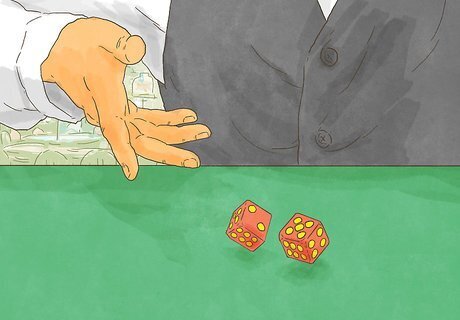
Roll the chance roll. The outcome of the roll determines whether the caster wins, loses, or rolls again. If the caster rolls the chance number, the caster wins. If the caster rolls the main at this stage, the caster loses. If this is the caster’s third consecutive loss, the caster passes the dice to the next player to cast. If the caster rolls any other number, the caster rolls again until rolling either the chance or main.
Playing Cho-Han Bakuchi
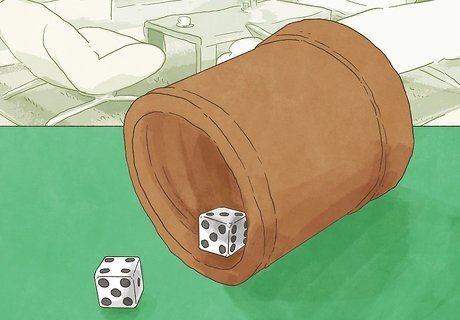
Place two dice in a cup. In Japan, where the game originated among traveling gamblers who sat on a tatami floor, the cup or bowl is made of bamboo.
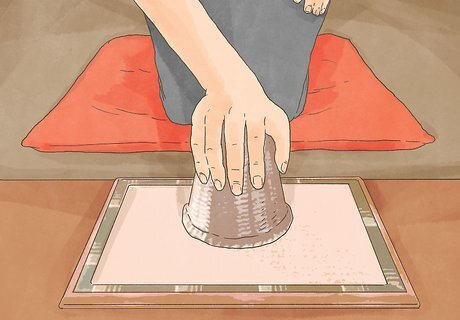
Roll the dice in the cup, then place it on the floor mouth down, concealing the dice. Traditionally, the dealer rolling the dice sits in a kneeling position with buttocks touching heels and tops of feet flat against the floor (the ‘’seiza’’ position) and is shirtless, to prevent any accusation of cheating by concealing extra dice in sleeves or pants.
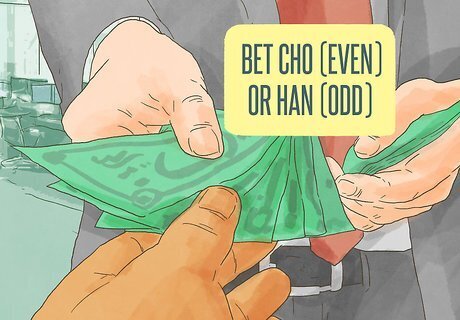
Take bets on whether the total of the dice is an odd or even number. Players may bet against each other, or against the house. Players who bet “Cho” are betting that the sum of the dice will be an even number (2, 4, 6, 8, 10, or 12). Players who bet “Han” are betting that the sum of the dice will be an odd number (3, 5, 7, 9, or 11). When players bet against each other, typically, the same number of players will bet “Cho” as bet “Han.”
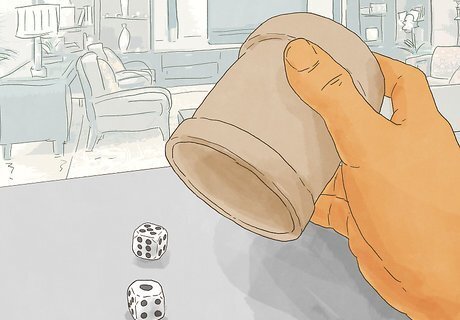
Remove the cup to reveal the outcome. Losers pay winners, with the house taking a percentage of the winnings if the dealer is employed by a gambling house. The game is commonly played today by members of the ‘’yakuza’’ (Japanese mafia) and is featured in yakuza and ‘’chambara’’ movies. It is also featured as a minigame in the ‘’Ryu ga Gotoku’’ (Yakuza) series of video games.
Playing Under-Over 7
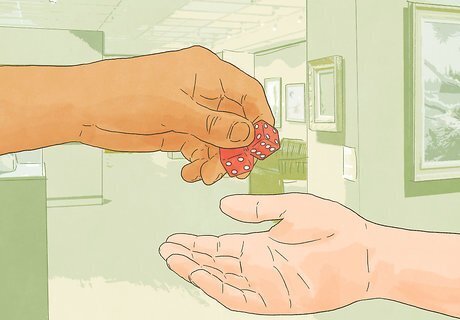
Place bets on the outcome of the dice roll. There are only three bets taken: An even money bet that the total will be under 7. An even money bet that the total will be over 7. An odds bet that the total will be 7. Typical odds are 4 to 1, although some casinos pay only 3 to 1. (Although 7 is the most likely number to be rolled on two dice, the actual odds are 5 to 1 against its being rolled.)
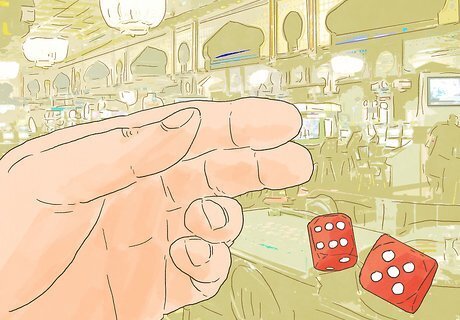
Roll the dice. Most commonly, the dice (made of wood) are rolled down a chute by a dealer.
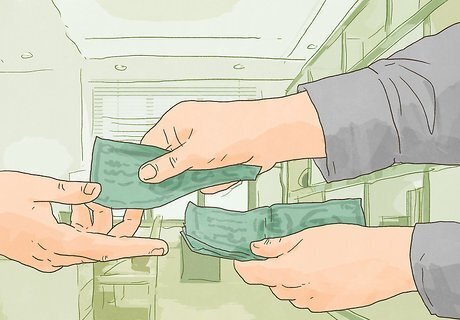
Pay winners and take money from losers according to the outcome of the dice roll. Instead of rolling the dice down a chute, they may be rolled in a cup and concealed as in Cho-Han Bakuchi.
Playing Mexico
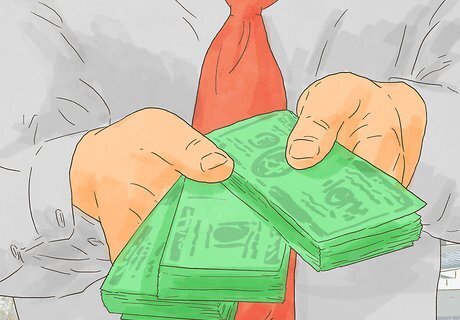
Have each player agree to wager a total amount over the course of the game. This is similar to “cashing in” in poker or craps. At the end of each round, a player will put an agreed-upon portion of that money into the pot each time he or she loses.
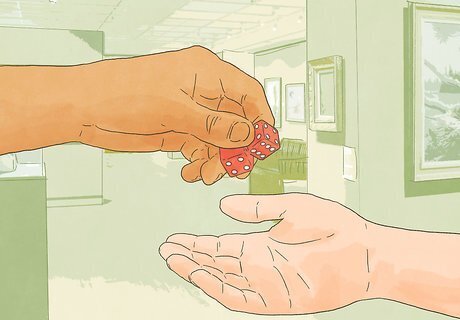
Determine the initial rolling order. Each player rolls one die; whoever rolls highest starts, with play passing to the left. The player who rolls lowest pays into the pot. Having a table or surface with a backstop to roll the dice against and keep them from rolling off the table is recommended.
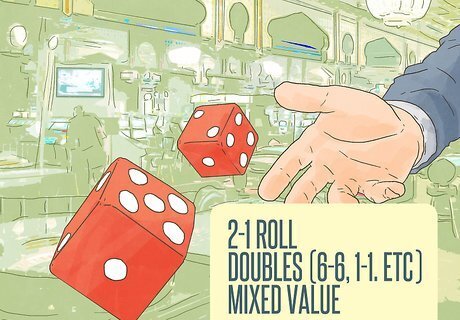
Have each player, in turn, roll two dice up to three times. The lead player for the round determines how many times the other players may roll by the number of times he or she rolls the dice. The other players may roll fewer times than the lead player, but not more times. The results are ranked, high to low, according to the following system: A roll of 2 – 1, read as “21.” (The higher face value is read as the tens digit of a two-digit number and the lower face value as the ones digit.) This is called “Mexico,” from which the game takes its name. A roll of doubles, ranked downward from 6-6, or “66,” to 1-1, or “11.” Another mixed roll, ranked first by the higher face value, or tens digit, and then by the lower face value, or ones digit. Thus, 3-1, or “31,” is the lowest possible roll. Roll values are not cumulative; if a player rolls 34 on the first roll and 31 on the second, they are not added to make 65. If the lead roller rolls Mexico in any of his or her allotted rolls, the dice immediately pass to the next player, who may make up to three rolls (and so determine how many rolls subsequent players may make if he or she chooses not to make all three). If that player rolls Mexico, the next player gets the dice to make up to three rolls, and so on. The leader’s roll of Mexico also doubles the stakes for the losing player. Players should decide before starting play if additional rolls of Mexico during a round further increase the stakes and by what method. However, if any player other than the lead player for a round rolls the first 2 – 1 combination, it is not treated as Mexico and the stakes are not increased. If two or more players tie for lowest score after everyone has played, they play a round of Mexico among themselves to determine who is the loser.

Have the round loser pay into the pot. If the loser loses his or her stake on paying into the pot, that player is eliminated from the game.
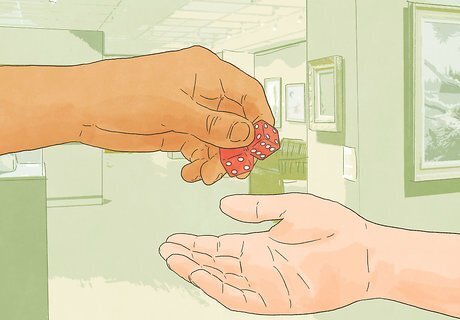
Pass the dice to the next player. Play continues as before, with the person with the lowest roll paying into the pot and eliminated if his or her stake is wiped out. The last player remaining with stake money wins the pot.
Playing Shut the Box

Gather the players. Shut the Box, also called Batten Down the Hatches, Canoga, High Rollers (the game show of the same name derives from it), Klackers, or Zoltan Box, is normally played with two to four players for money, although it can be played as a solitaire game. When played for stakes, each player kicks a certain amount of money in the pot, which the winner will collect when the game is over.

Open all tiles on the box. The box in Shut the Box is labeled with tiles numbered from 1 to 9. At the beginning of the game, all the tiles are open. Another form of box is the “Full House” box, which features tiles numbered from 1 to 12. A variation of this form of Shut the Box is “The 300,” which has a second box with tiles numbered from 13 to 24. The game may also be played with some of the tiles already closed. In Even Stevens, only the even numbers are open, while the odd numbers are closed. In Against All Odds, only the odd numbers are open, while the even numbers are up. In 3 Down Extreme, the numbers 1, 2, and 3 are closed, while the rest are open. In Lucky Number 7, only the 7 tile is open and the box is passed around the players until one rolls a 7 to close it.

Determine who starts. This can be done by having the players roll one or both dice, with highest roll going first.
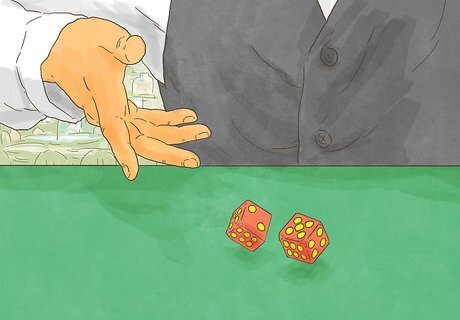
Have each player roll the dice, in turn. Depending on the version being played, the player must roll both dice as long as the 7, 8, or 9 tiles remain open. Once those tiles are closed, the player may choose to roll one or both dice on each turn. In some versions of the game, if a player rolls doubles, the player gets an extra turn. This option was used on the game show High Rollers, where an insurance marker was given to the player if he or she had a legal play with the value rolled. In other versions of the game, a player must roll both dice until the sum of the values of the only tiles open is 6 or less (1, 2, 3; 1 and 5; 2 and 4; or 6).
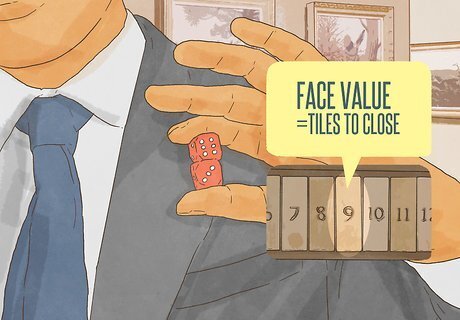
Use the total of the dice to determine which tiles to close. Tiles whose face values add to the same values as the value rolled on the dice may be closed. If the value of the roll was 7, any of the following closures are legal: Closing the 7 tile only. Closing the 1 and 6 tiles, whether the individual die values are 1 and 6 or not. Closing the 2 and 5 tiles, whether the individual die values are 2 and 5 or not. Closing the 3 and 4 tiles, whether the individual die values are 3 and 4 or not. Closing the 1, 2, and 4 tiles. If the game is played “Thai style,” only one tile can be closed on each turn, either one of the two face values on their dice or their sum. If a value of 7 was rolled as a 3 – 4 combination, the player could shut the 3, the 4, or the 7 tile, but not any others, and not any combination that added to 7. Other variations of the game require a certain tile to be closed on the first turn, or the player loses. In “2 To Go,” the 2 tile must be closed first; a first roll of 4 means an automatic loss. In “3 To Go,” the 3 tile must be closed first; a first roll of 2 means an automatic loss.
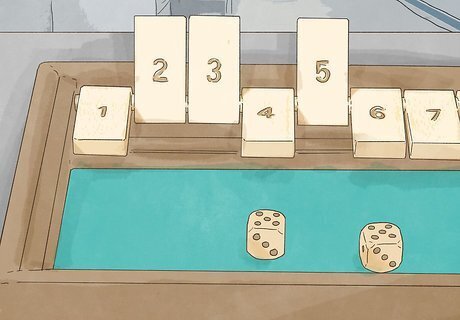
Continue rolling until no more tiles can be shut. Once a player rolls a number that cannot legally close any of the tiles still open, that player’s turn is over. At this point, the player adds the values of the still open tiles to determine his or her score; if the 2 and 3 tiles are the ones still open, the player scores 5. (This is known as the Golf variation.) In the Missionary variation of Shut the Box, a player’s score is the number of tiles still open. If the 2 and 3 tiles are the ones still open, the player scores 2 for two still-open tiles. In the Digital or “say what you see” variation of the game, the player’s score is a number made using the digits still displayed after making a roll that can’t shut boxes. If the 2 and 3 tiles were still open, the player’s score would be 23 instead of 5.
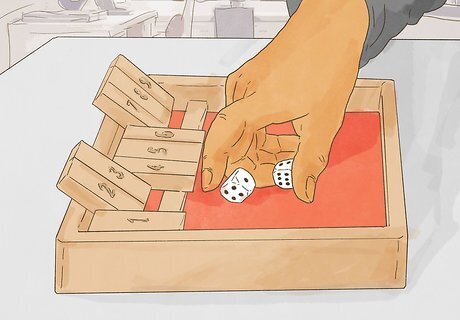
Pass the box and dice to the next player. The tiles are re-opened, and the next player tries to shut them by rolling the dice until no more tiles can be shut. This repeats until all players have had a chance to try to shut the box. The player with the lowest score wins the pot. If any player succeeds in shutting all the tiles on the box, that player wins the game automatically and gets double the stake from the other players. The game can be played in rounds (Tournament style), using the Golf scoring variation, where each player’s score for a round is added to his previous score. Once a player reaches a total of 100 after a round is over, the player with the lowest score wins. It can also be played elimination style, where when a player reaches a total score of 45 or greater, that player is eliminated. In the Unlucky Number 7 version of the game, if a player rolls a 7, the game ends.
















Comments
0 comment